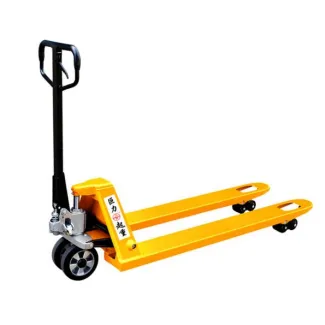


Understanding Pallet Trucks A Cornerstone of Efficient Warehousing
In the bustling world of logistics and warehousing, efficiency is crucial for maintaining productivity and meeting customer demands. One of the indispensable tools in this arena is the pallet truck, a versatile piece of equipment designed to simplify the movement of heavy loads. This article explores the significance and functionality of pallet trucks, highlighting why they are essential in modern warehouses.
Pallet trucks, also known as pallet jacks or hand trucks, come in various designs, but they all serve the same primary purpose to transport palletized goods. Skilled operators can easily maneuver these trucks, allowing them to lift and lower heavy loads with minimal physical strain. This not only enhances safety but also significantly improves productivity in the workplace.
Design and Functionality
The basic design of a pallet truck consists of a sturdy frame, two forks that slide under the pallet, and a hydraulic lifting mechanism. When the operator pumps the handle, the hydraulic system raises the forks, allowing the pallet to be lifted off the ground. The ability to move pallets with ease means that products can be relocated quickly, whether it's from one section of the warehouse to another or loading onto a truck for shipment.
One of the standout features of modern pallet trucks is their adaptability. Manual pallet trucks are operated by hand and require no batteries or electric sources, making them an economical choice for many businesses. On the other hand, powered pallet trucks, often seen in larger warehouses, utilize electric motors to lift and transport loads, further reducing physical exertion. These electric models are particularly beneficial for moving heavier loads over longer distances, showcasing the advancements in warehouse technology.

Safety Considerations
While pallet trucks provide significant advantages in terms of efficiency, it's essential to prioritize safety in their operation. Operators must be adequately trained to handle the equipment to avoid accidents that could lead to injuries or damage to the goods. Proper usage involves adhering to weight limits, maintaining visibility while maneuvering, and ensuring that the load is stable before moving.
Frequent inspections of the pallet trucks are also crucial. Checking for worn wheels, hydraulic fluid leaks, and general wear and tear can prevent mechanical failures that could disrupt warehouse operations. By fostering a culture of safety and regular maintenance, businesses can enhance the longevity of their pallet trucks and minimize risks.
The Future of Pallet Trucks
As technology advances, so too will the capabilities of pallet trucks. Innovations such as smart technology integration—where pallet trucks are equipped with sensors and IoT connectivity—could lead to even greater efficiencies. These advancements might enable real-time tracking of inventory movement and automated routing within the warehouse, streamlining operations even further.
In conclusion, pallet trucks are fundamental to the operations of warehouses and distribution centers. Their design enables the easy movement of heavy loads, enhancing overall productivity and safety. As businesses continue to seek ways to optimize their logistics processes, the importance of pallet trucks as a cornerstone of efficient warehousing will only grow. By embracing both traditional and innovative pallet truck technologies, companies can ensure they remain competitive in an ever-evolving industry. Whether through manual or powered models, these trucks will undoubtedly continue to play a pivotal role in shaping the future of logistics.



